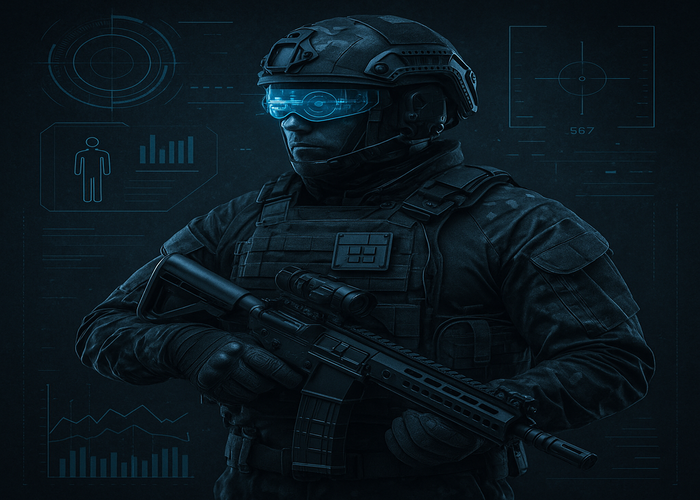Enhancing Soldier Safety through Design Thinking

Modern warfare is no longer confined to brute strength or advanced weaponry—it's a complex arena where adaptability, intelligence, and human resilience define success. Today’s soldiers confront not just enemy fire, but extreme environments, mental strain, and ever-shifting combat scenarios. In this landscape, the need for smarter, safer, and more responsive solutions has never been greater.
Enter design thinking—a human-centered, solution-driven approach that’s rapidly transforming defense innovation. From reimagining protective gear to designing intuitive battlefield technologies, design is stepping out of the studio and into the trenches, where every detail can mean the difference between risk and resilience.
- 1. Bulletproof Gear: Where Design Meets Life-Saving Technology
Today's soldier needs more than just ballistic protection. Modern design courses emphasize the integration of materials science, ergonomics, and user-centered design to create gear that is:
- Lightweight yet high-strength, using advanced materials like graphene composites and Kevlar-reinforced fabrics.
- Ergonomically tailored for mobility, breathability, and comfort during long missions.
- Modular and adaptive, allowing soldiers to configure gear based on mission type and environmental conditions.
- Integrated with sensors, enabling real-time health monitoring (e.g., heart rate, body temperature, stress levels).
Through iterative prototyping and user feedback—core principles in design education students and professionals are now developing next-gen body armor that adapts like a second skin.
- 2. Smart Weapons: From Firepower to Smart Power
Weapon design isn’t just about increased lethality anymore. It’s about precision, control, and data-driven efficiency. Design-thinking-led innovations in smart weapons have led to:
- Enhanced targeting systems with AI-assisted scopes and GPS integration.
- Biometric locks that ensure weapons are operable only by authorized personnel.
- Reduced recoil designs to support stability and reduce physical fatigue.
- Integrated communication systems that sync with command units for coordinated strikes.
Design courses teach the importance of usability, feedback loops, and intuitive interfaces skills that are invaluable in developing smart weapon systems that enhance both performance and safety.
- 3. Combat Solutions: Designing for the Battlefield Ecosystem
Designing for combat is no longer confined to individual gear or weapons. It's about creating integrated solutions that enhance team coordination, situational awareness, and survivability. Some innovations born from design methodologies include:
- Augmented reality (AR) visors providing battlefield data overlays.
- Drones for reconnaissance, resupply, or even casualty evacuation.
- Wearable tech networks that connect squads, sharing data on terrain, threats, and vitals.
- AI-driven simulation tools for pre-mission planning and soldier training.
These ideas emerge from interdisciplinary collaboration, a hallmark of modern design education that combines fields like engineering, computer science, psychology, and visual design.
In a rapidly evolving battlefield, design thinking is reshaping military innovation—enhancing soldier safety through smarter, more intuitive solutions. From lightweight gear to immersive technologies, design places the human experience at the centre. The future of defence lies not just in strength, but in being safer, smarter, and more connected.
Design for Defence: The Future is Human-Centered
Design is no longer an afterthought in defence—it’s leading the way. At Presidency School of Design, the Design Thinking courses equip students, right after 12th grade, to tackle complex challenges with a human-centered approach. With a focus on empathy, creativity, and practical problem-solving, these courses prepare students for impactful careers across defence, healthcare, technology, and beyond. By nurturing critical thinkers and empathetic innovators, the program is shaping a future where combat—and society as a whole—is not only smarter but safer.
Written By
Dr. D. Kamalraj
Associate Professor, Presidency School of Design













 Rajanukunte, Yelahanka, Bengaluru, Karnataka, Pin: 560119, India
Rajanukunte, Yelahanka, Bengaluru, Karnataka, Pin: 560119, India
 +91 9022092222
+91 9022092222